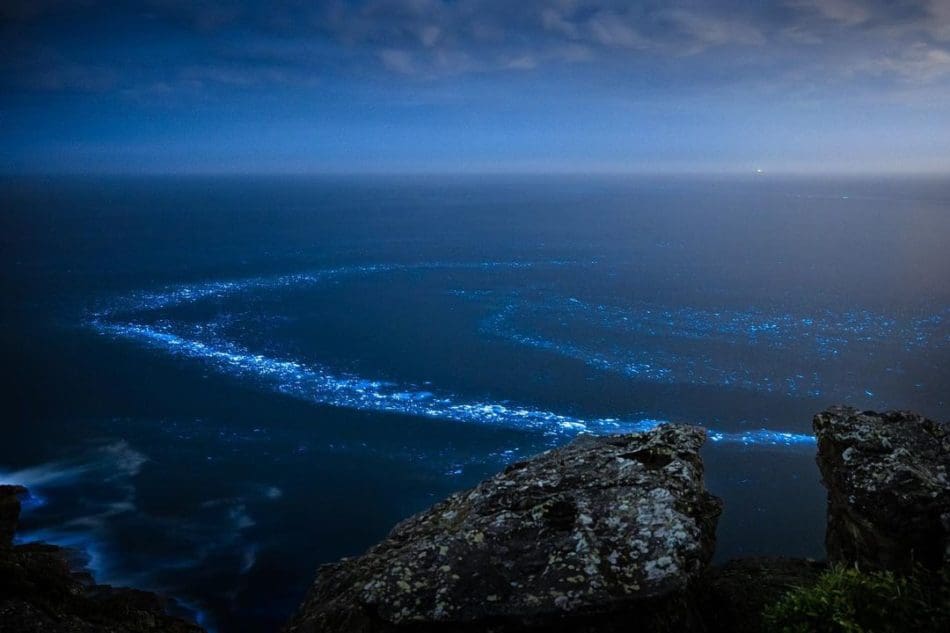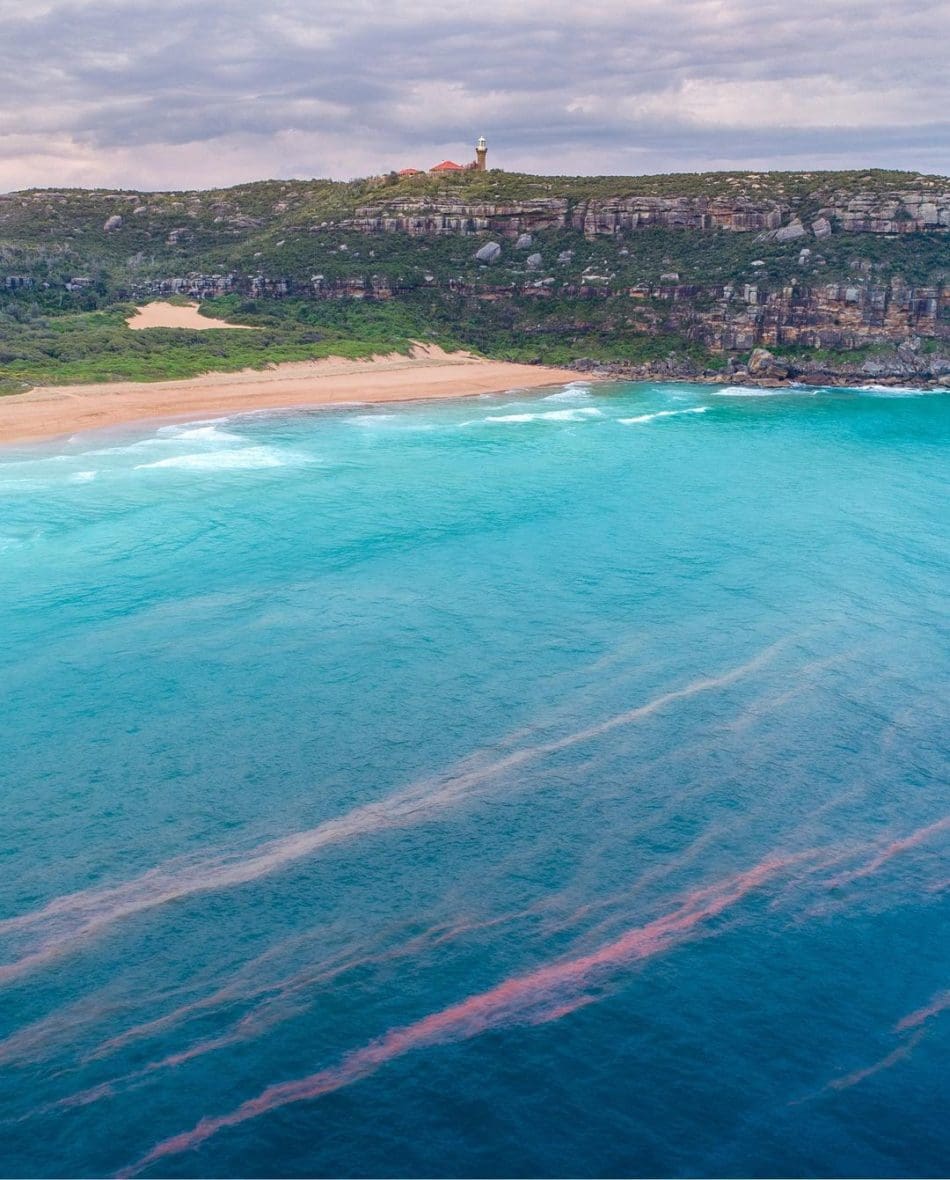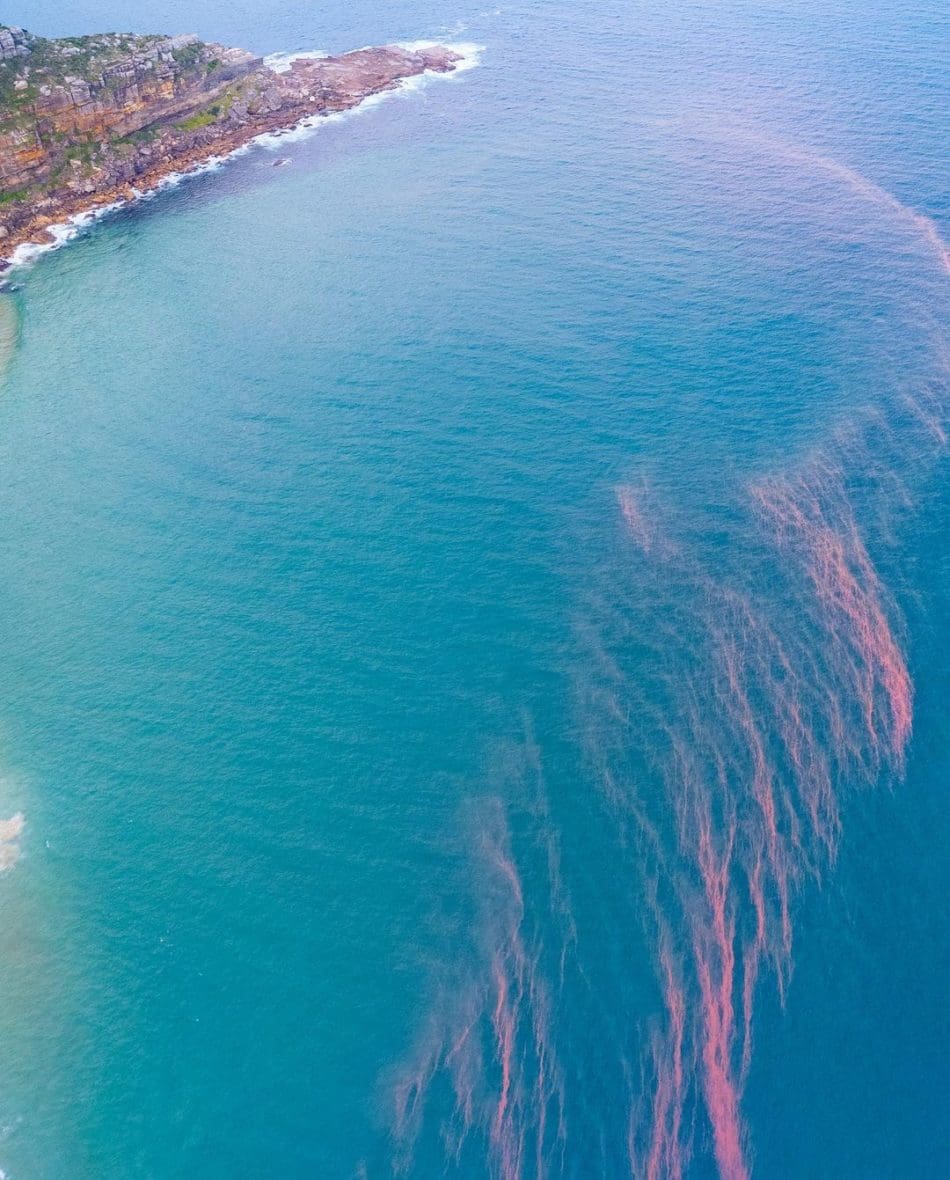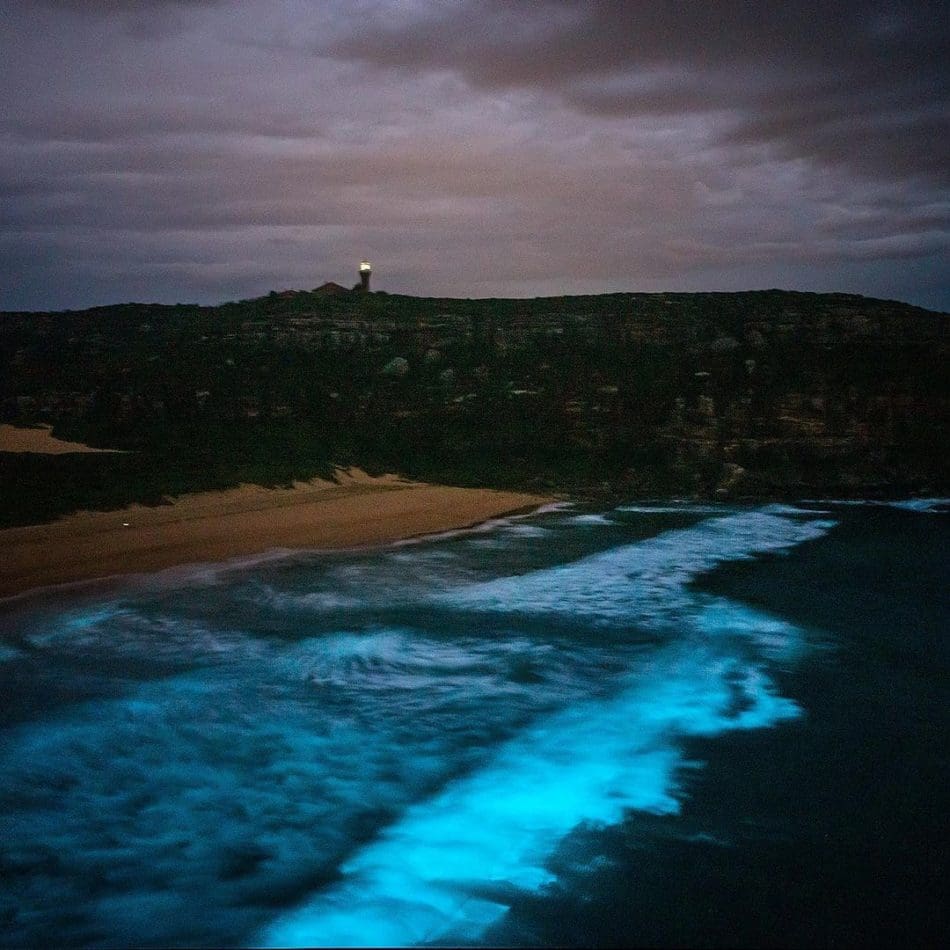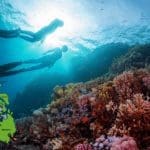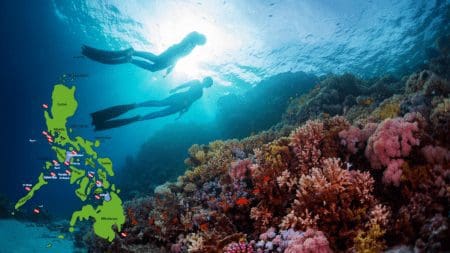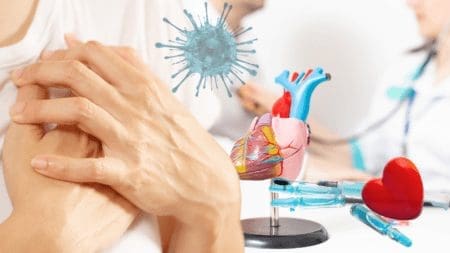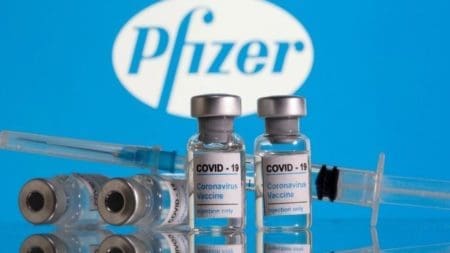A rare bioluminescence bloom recently left parts of the ocean on Sydney’s northern beaches looking extremely vibrant.
The natural wonder at Palm Beach and Freshwater provided keen photographer Jamen Percy with a series of epic images and memories for life, as the water turned a unique shade of electric blue.
The hobby snapper felt the ocean briefly resembled a ‘galaxy.’
‘Stumbling across bioluminescence is a surreal experience of wonder and fascination,’ Percy, who lives on the northern beaches of Sydney.
‘Is this actually happening? Did that wave just glow blue? It is impossible not to feel like a child again playing with nature.
‘It really glows an incredible electric blue color that ignites your wanderlust.’
Percy saw the bioluminescence at both beaches within the space of four days at Freshwater, where he was surfing with friends, Percy, 39, raced out of the ocean to capture the moment on his camera.
Bioluminescent blooms in the ocean occur due to microscopic floating organisms known as phytoplankton.
They are so tiny that thousands can fit into a single drop of water.
In July last year at Jervis Bay, on the south coast of NSW, the ‘light show’ was believed to be was one of the brightest ever, according to locals who were lucky enough to watch it unfold.
Across Australia, ocean bioluminescence has also been witnessed at Preservation Bay in Tasmania and Port Lincoln in South Australia.
Globally it has been viewed in countries such as New Zealand, Puerto Rico, Mexico, Thailand, the US, Hong Kong and Japan.
Wondering what does bioluminescence looks like during the day? This is it from Jamen Percy’s drone at Palm Beach. They saw it looked like a muddy tide out from the shoreline from the DSLR camera so they thought they would risk it and try to see if it was the algae.
Once the drone was up in the air, without the sun’s glare the pinkness was really evident as you can see, there’s no way you could mistake this for sand, mud, or surface runoff. I’ll post another story up soon on examples of seeing it in front of the shore so you can all keep your eyes peeled for it. It’s still I getting in Sydney but in small pockets on some beaches.
How to spot the bioluminescence ‘blue’ bloom in the ocean:
Ideally, it is best to be in a dark area away from light pollution
The darker it is, the more the bioluminescence will glow once your eyes adjust
During the day, the bioluminescence is usually a red/pinkish tide
If it is pinker than the local sand, good chance you are in for a show as soon as it gets dark



